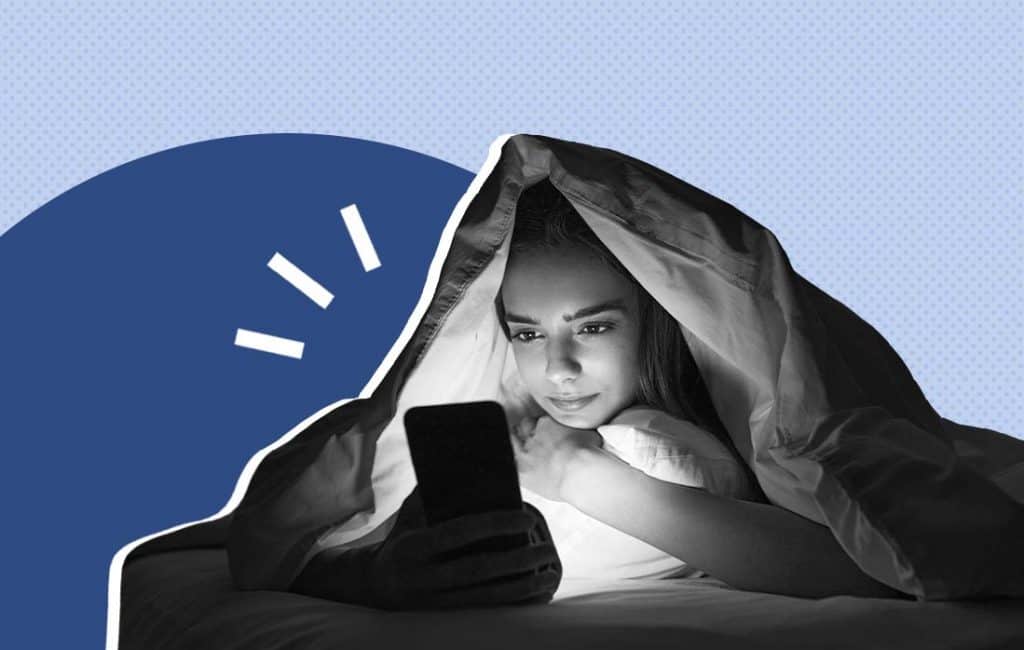
A Center survey revealed that 95 percent of those ages 13 to 17 use YouTube while 66 percent spend time on TikTok, followed closely by Instagram and Snapchat. With this data in mind, it’s no wonder teens nowadays seem constantly engrossed in their screens, leaving little time for hobbies, relationships, and schoolwork IRL.
While social media can help teens feel connected and understood when they otherwise may feel out of place, research increasingly points to social media and increased screen use as a contributor to declining mental health.
Teen mental health has become a hot topic in medical and governmental conversations. With rising incidences of suicide and drug overdoses, the CDC has determined there is an ongoing mental and behavioral health crisis among adolescents that can’t be ignored.
Part of that impact, experts believe, is due to poor sleep habits that come as a result of screen time. “As a school psychologist, I’ve observed the intricate relationship between sleep and mental well-being in adolescents,” says Alex Anderson-Kahl, a nationally certified school psychologist and founder of the blog Healing Little Hearts. Below, learn more about how social media use can impact sleep and ultimately affect teens’ mental health.
How Screen Time Impacts Sleep
Screen time impacts sleep dynamics in multiple ways. Dr. Stewart Parnacott, Doctor of Nurse Practice, explains that the blue light emanating from screens interferes with the secretion of melatonin, a hormone that lets the brain and body know it’s time for sleep.
Viewing and engaging with overly stimulating digital content close to bedtime can also cause heightened cognitive alertness, which can get in the way of transitioning smoothly into rest, relaxation, and sleep, according to Parnacott.
What’s more, if what a teen views on their screen is emotionally challenging, shutting off the brain can be tricky. If you’ve ever tried to sleep after a fight or even after an intense workout, you may have felt the effects of high nervous system activation — flight or flight mode — such as an increase in heart rate and breathing, essentially the opposite of what you need to drift into dreamland.
Sleep and Teen Mental Health
More and more research reveals the connection between social media use, inadequate sleep, and poor mental health in teens, primarily because sleep plays a critical role in mental health, especially for teens whose brains are still developing. “Sleep during adolescence is not just a restorative process; it’s foundational for cognitive functioning, emotional regulation, and overall health,” explains Anderson-Kahl. So, it is no wonder the CDC has found that 42 percent of teens and pre-teens experience mental health issues.
According to Anderson-Khal, the brain undergoes significant developmental changes during the teen phase, especially in the prefrontal cortex, which is responsible for decision-making, impulse control, and emotional regulation. “Adequate sleep is paramount for these processes to function optimally,” he says.
The CDC’s data aligns with evidence that sleep deprivation can intensify feelings of sadness, hopelessness, and even suicidal ideation in teens. “A lack of sleep diminishes resilience, making it challenging for adolescents to cope with daily stressors, both minor and significant,” states Anderson-Khal. Moreover, the constant need to be connected on social media platforms can lead to increased anxiety and delayed sleep times.
Mental well-being and sleep quality have a bidirectional relationship, according to Parnacott, which means feeling mentally unwell negatively impacts sleep quality, and poor sleep can fuel or worsen mental health challenges. It’s a two-way street that can lead to a cycle that’s hard to break.
How Schools and Parents Can Help
What’s clear from the data is that something has to change. Schools and parents can help influence how and when teens use screens and can make adjustments to routines that will boost sleep quality.
“A noteworthy suggestion from the CDC’s findings is the potential benefit of later school start times,” says Anderson-Khal. “Adolescents naturally tend to fall asleep and wake up later due to shifts in their circadian rhythms. By aligning school schedules with these rhythms, we could enhance sleep duration and quality, potentially alleviating some of the mental health challenges underscored by the CDC.”
However, while sleep is undeniably crucial, Anderson-Khal stresses that a holistic approach to adolescent mental health must also consider other factors. Academic pressures, social dynamics, family environment, and access to mental health resources significantly affect a teenager’s overall well-being.
“In light of the CDC’s findings, it’s imperative for parents, educators, and policymakers to prioritize sleep as a vital component of adolescent well-being. As we navigate the intricacies of modern life, we must strive to create environments that foster restful sleep and robust mental health for our youth,” says Anderson-Khal.




























